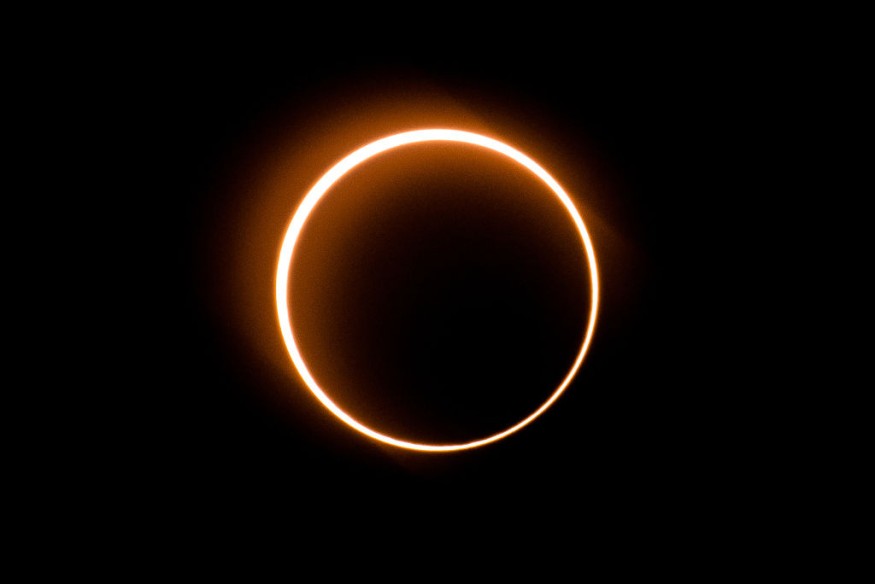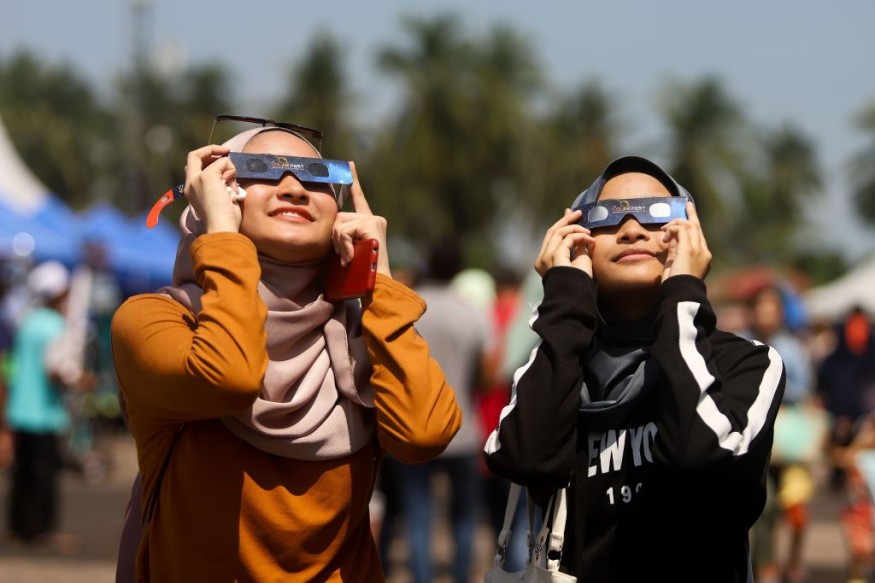
On October 14, a celestial phenomenon known as the "ring of fire eclipse" can be seen in a few locations along the path from Oregon to Brazil. The best and safest ways to witness the annular solar eclipse are listed by experts.
Cosmic Event: Ring of Fire Eclipse
During the 2023 annular solar eclipse, a 'ring of fire' will grace parts of the US as the moon passes between the sun and Earth. This event on October 14 starts at 12:13 PM ET in Oregon and concludes three hours later in Texas.
The eclipse's path includes eight states: Oregon, California, Nevada, Arizona, Utah, New Mexico, and Texas. Extending to Mexico, Central and South America, this annular eclipse marks a rare occurrence. Notably, North America witnesses this type after 11 years, unlike total eclipses, as the moon's distance prevents full coverage of the sun's light, showcasing the 'ring of fire' effect.
This indicates that it is positioned so that a spectacular ring of light or "fire" can break through.
A total eclipse, which the US will witness in 2024, occurs when the moon moves between the Earth and the sun but the difference is it completely obscures the whole surface of the sun.
This year's annular solar eclipse, a ring of fire eclipse, will stretch over 125 miles from Oregon to Brazil. As it occurs, light levels are expected to diminish as the moon obscures 90% of the sun.
Preparing to View the Ring of Fire Eclipse Safely
Eclipse enthusiast Michael Zeiler from GreatAmericanEclipse.com suggests that viewers wearing eclipse glasses will witness a 'brilliant ring of sunlight.' Zeiler recommends observing from the US National Parks in the 'Four Corners' area, where Colorado, New Mexico, Utah, and Arizona meet, due to favorable weather conditions.

Although eight states fall within the eclipse's path, only certain areas will experience the complete annular phase. Southern Oregon's coast offers prime viewing, while the northeastern region of California will also catch a glimpse.
Astronomer Dr. Emily Drabek-Maunder of the Royal Observatory Greenwich issued a warning that staring directly at the Sun, even when it is partially eclipsed, can result in severe and irreversible eye damage.
Drabek-Maunder cautioned against looking directly at the Sun or even wearing conventional sunglasses because doing so can seriously injure the eyes.
Avoid photographing direct photos of the sun since it is dangerous to do so with binoculars, telescopes, or even a camera lens without proper filters.
Alternatives include using a basic pinhole projector, glasses made for viewing the solar eclipse that may be ordered online, or specialized solar filters.
According to Drabek-Maunder, a projector may be created by punching a tiny hole in a piece of card and putting it up to the Sun so light streams through the hole onto some paper that is positioned behind the card.
By doing this, the Sun's outline is projected onto the sheet of paper, allowing observers to see safely how the shape changes when the Moon moves in front of the Sun.
Related Article : X-Class Solar Flares Cause Radio Blackouts in the Pacific, Upcoming Possible Cannibal CME
© 2025 NatureWorldNews.com All rights reserved. Do not reproduce without permission.





